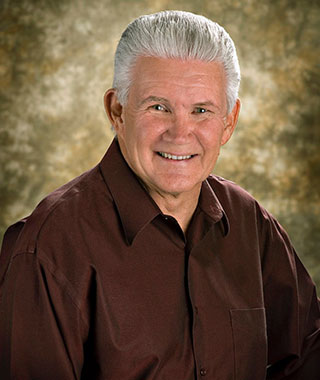Understandably because of the high property values within the region, Southern California is the biggest market for reverse mortgages in the United States. However, Northern California should not be overlooked, since property values and different property types help to make that specific region attractive among seniors seeking a reverse mortgage.
To get the lay of the land regarding reverse mortgage industry activity there in 2020 and 2021 as well as the early months of this year, RMD sat down with Rich Pinnell, reverse mortgage loan originator and branch manager with Primary Residential Mortgage, Inc. (PRMI) in Redding, Calif. With property values on the rise but a few hiccups happening along the way due to the pandemic, Pinnell describes an active reverse mortgage region.
How 2020 and 2021 went for reverse mortgages in Northern Calif.
While every year tends to work out a little differently, 2020’s general fueling of industry activity translated well for Pinnell’s business, he said.

“2020 was actually the best year I’ve ever had in the business,” he told RMD in an interview. “Last year, the deals were a little crazy, just lots of little bits and pieces to them that didn’t work well, meaning they took a lot longer to close than we would have thought. We got some strange appraisals last year on deals that should have gone through, but certain appraisals came in low, and I think that’s just the volatility in the value area.”
However, sometimes the business comes back around. In 2021, Pinnell closed a reverse mortgage that had previously been missed because of a new appraisal on the property coming in where it was believed to be the year before.
“It took probably six months for the value to really settle into the marketplace,” he says. “And that was pretty much a challenge all last year, just looking at things and realizing that a home was worth more than what we thought it would be.”
Home values in the area, recovery from wildfire
Of course, a major indicator of how much a reverse mortgage could benefit a potential client is in home values. While certain values may have slowed, that has not diminished positive growth, Pinnell says. However, there are still persistent inventory issues due to a devastating wildfire that tore through the area in 2018, known as the “Carr Fire.”
“Values are still going up, but we have a foundational problem with housing inventory in Northern California,” he explains. “We had the Carr Fire which wiped out about 1,000 homes in Shasta County. Our builders in this county can build about 250 to 500 homes a year depending on conditions, and we need about 400 homes a year just to stay ahead of people moving in and people moving up.”
The reality of supply is not currently able to meet the number of first-time homebuyers looking to move into the area, which has created a structural problem with housing inventory, Pinnell says. That naturally has an effect on prices and home price appreciation (HPA).

“Along with the run-up of higher pricing on houses, we have this awful shortage right now,” he says. “We have 350 houses on available listings, and this time of year we should have 700 or even — in a really healthy, balanced market — we would have between 1,000-1,1100 by spring.”
In terms of the factors driving more and more people into Pinnell’s community, a major beneficiary of higher HPA levels has been homes in the San Francisco Bay Area or near Sacramento. Because prices are rising rapidly there, some are choosing to sell those homes and move into less expensive homes in areas like Redding. That is not a new phenomenon in the area, but it has exacerbated the supply issues currently being faced by the community, he says.
“Then we lost all those houses, and we can’t stay on top of the inventory we need, let alone replace the 1,000 houses we lost,” he says. “To this day, there are still lots all over this area, at least 100 developed blocks that were burned to the ground.”
Area seniors, in some cases, were not spared from the fire’s devastation, Pinnell explains.
“As it happens, one of the areas that the fire went through was an older residential area that had been built in the 1970s,” he says. “So when you have those kinds of things, you wind up with people having built their home and then live there, raise their family, retired in that home because they had it paid off or paid down. Some of those people rebuilt their homes, and some of those people moved away and sold the homes to developers. Some of those developers went in and built, basically, the same footprint: 1600-1800 square feet homes on that same line.”
A senior ‘leg up’
The flip side of this, of course, is that HPA for seniors in the area has allowed more of them to access a higher level of equity, potentially increasing the attractiveness of the reverse mortgage product, he says.
“The seniors have gotten a real leg up in this last year and a half,” he says. “If they were tight before and couldn’t do the reverse, they’ve added a year of age. Of course, interest rates are up now, but they were down for a long time. But the reality is the increased value in the home puts a lot of people in play now that weren’t in play before.”
Regionally this has increased the value proposition for area seniors, but the area is also falling into the realm of national trends regarding senior-held home equity, Pinnell says.
“All the national reports are saying that there’s trillions of dollars’ more home equity in the senior community there than there was two years ago, and that was still a major major number,” he says.
Refis play into his business as well, but they make up only about 10% of the business he is doing, Pinnell explains. Previous concerns about expense tend to diminish when a clear advantage is ascertained for the borrower, he says.
“On the reverse side. It just too expensive to get people to do [a reverse mortgage refi] unless there was a real benefit,” he says. “And in my case, the real benefit was that people got larger lines of credit out of their deal.”






